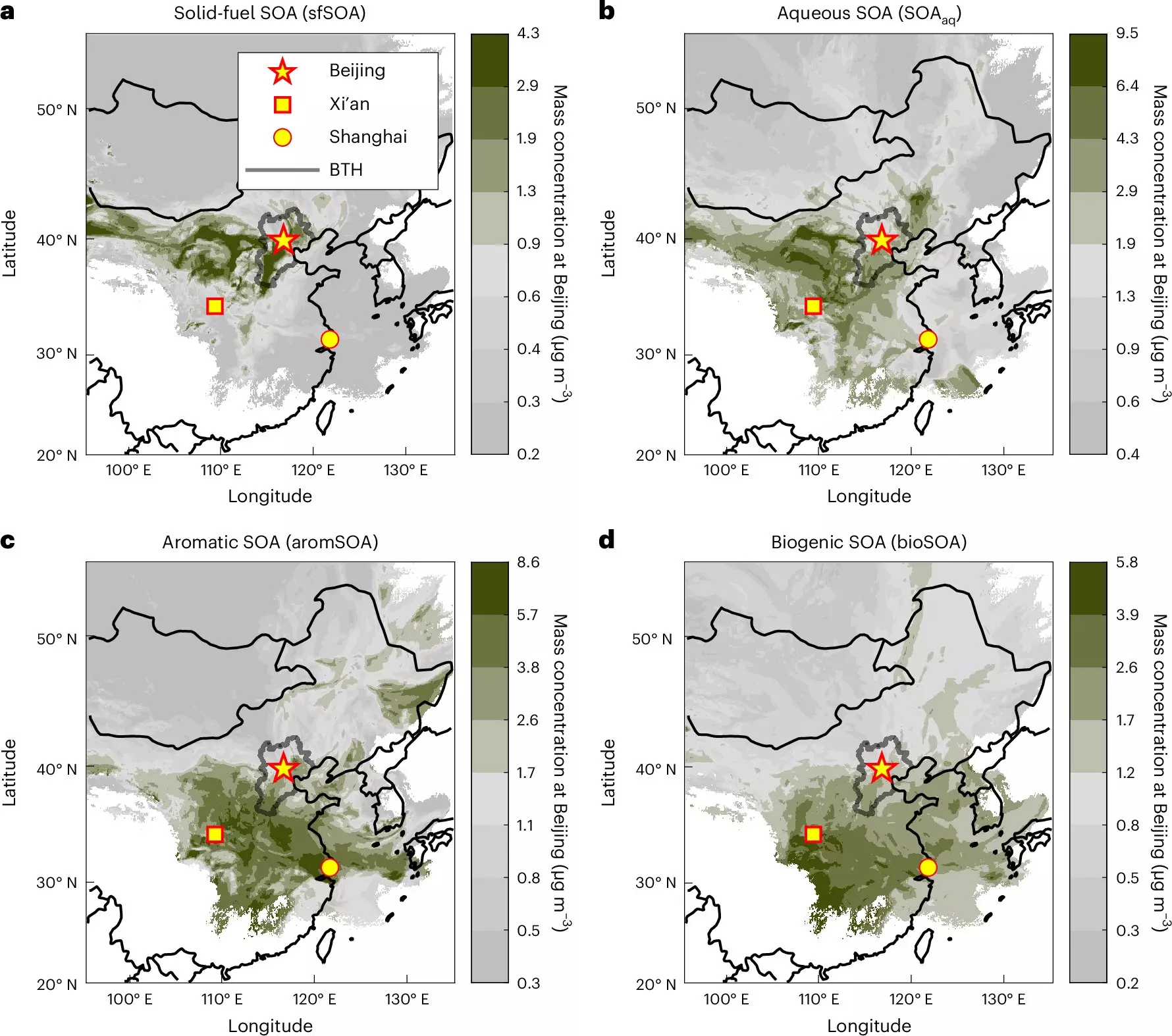Air pollution remains one of the most pressing environmental challenges of our time, with millions of lives claimed each year due to its adverse effects. Identifying the sources of these pollutants is crucial for implementing targeted strategies aimed at improving air quality. Despite numerous studies attempting to track pollution sources, challenges abound in accurately pinpointing these origins. Recently, a breakthrough study conducted by an international team led by researchers at the Paul Scherrer Institute (PSI) has shed light on the various sources contributing to the pervasive smog enveloping Beijing.
Utilizing an advanced mobile aerosol mass spectrometer, the researchers embarked on a rigorous examination of aerosol particles over Beijing. This innovative technology allows scientists to analyze smog at a molecular level, providing unprecedented insights into its sources and underlying processes. Led by environmental scientist Kaspar Dällenbach, the team collaborated extensively with institutions, including the Beijing University of Chemical Technology and the University of Helsinki. The results of their study were published in the esteemed journal Nature Geoscience, providing a significant contribution to the field of environmental science.
This study stands out for its sophisticated approach, using real-time analysis to discern the constituents of aerosols. Traditional methods often fall short, as they can only offer a snapshot of pollution but fail to provide the detailed molecular breakdown needed to trace the origins of the pollutants. This innovative technique allows for a richer understanding of how various pollutants combine and transform in the atmosphere, an essential aspect when dealing with the intricacies of urban air quality.
One of the key revelations from this research is the seasonal variability in the sources of Beijing’s smog. The study indicates that pollution sources differ significantly between the winter and summer months. During winter, the predominant source of secondary organic aerosols is linked to combustion processes involving wood and coal. These pollutants primarily stem from the broader Beijing-Tianjin-Hebei region, which exhibits high levels of residential heating and industrial activities.
In contrast, summer brings about a shift in the composition of the smog. The researchers found that southern airflows dominate during this season, bringing with them urban emissions from nearby large cities. The concentration of pollutants during the warmer months has been shown to have a strong correlation with traffic and industrial output within the Xi’an-Shanghai-Beijing belt. This observation underscores how air quality cannot be viewed in isolation but rather as part of a larger, interconnected web of regional activities.
Understanding the chemical makeup of pollutants is further complicated by the dynamic processes they undergo in the atmosphere. Before they reach urban centers, aerosols can transform chemically, losing their original composition and making it challenging to trace their sources. Dällenbach emphasizes the blurred signals that arise from this chemical evolution, which complicates the task of identifying the fundamental pollutants at their point of origin.
This complexity necessitates comprehensive strategies when it comes to implementing pollution-control measures. Traditional methods that focus solely on emissions within Beijing might overlook the substantial contributions from surrounding regions. Therefore, a broader perspective is essential for formulating effective air quality improvement plans.
Policy Implications and Future Directions
The findings from this research underscore the importance of regional cooperation in addressing air pollution. The smog crisis in Beijing cannot be tackled solely within the city’s confines; rather, it requires joint efforts among neighboring provinces and municipalities. Policymakers must recognize that air quality improvements are a shared responsibility, necessitating collaboration across territorial lines.
Moreover, insights gained from the methodologies developed in this research extend beyond Beijing. Dällenbach and his team are also looking to apply their findings to analyze air pollution in Europe and rapidly urbanizing cities in the Global South. As urbanization continues to rise globally, understanding the complex interplay between different pollution sources will be vital in crafting effective air quality management policies.
As the plight of air pollution continues to threaten global health, studies like the one conducted by Dällenbach’s team are fundamental in advancing our understanding of its sources. This research contributes valuable data that can shape future policies and strategies aimed at air quality improvement. By recognizing the regional nature of pollution and the transformations that pollutants undergo in the atmosphere, cities like Beijing can better navigate the path toward cleaner air. The findings echo a crucial message: effective solutions will require concerted, collaborative efforts beyond city boundaries, embracing a comprehensive approach to combat this pressing environmental issue.

